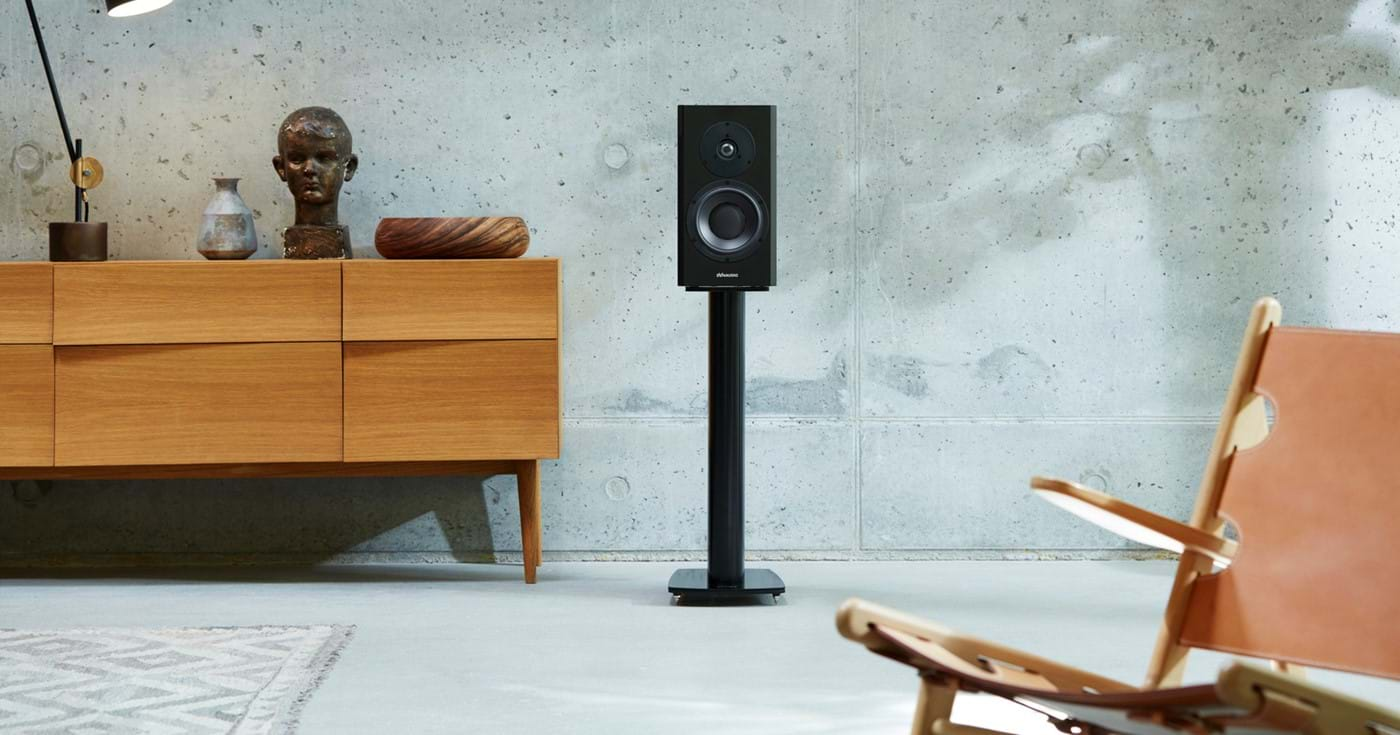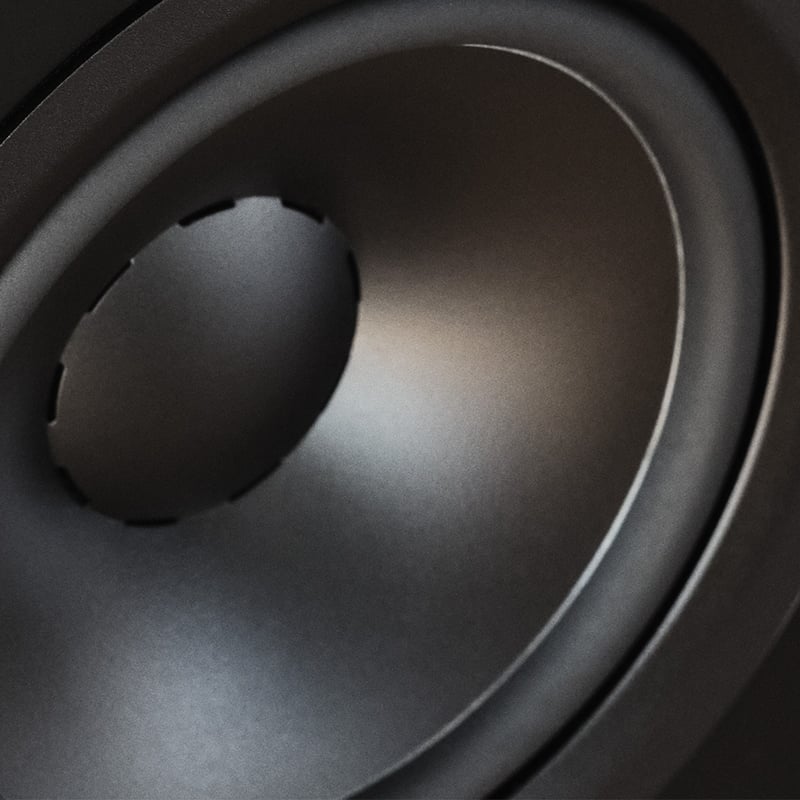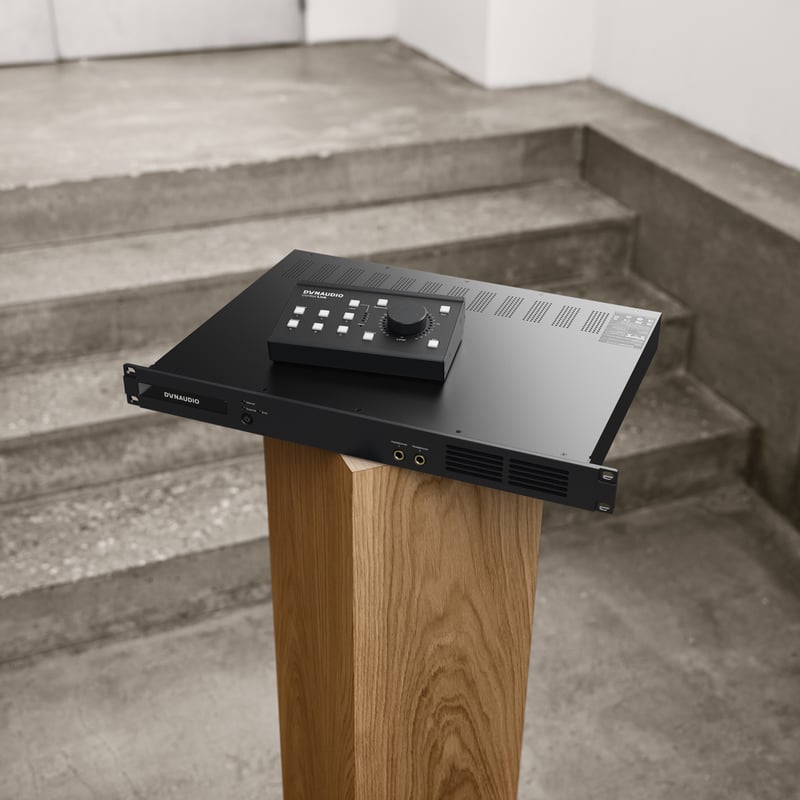So, what should you do instead? We’ve talked to our product team to learn more – and the solution is stands. Sideboards, tables and chairs are out of the question, too. Speaker stands are specifically designed to bring the best out of your speakers by managing vibrations, reducing early reflections and ensuring the proper amount of treble. Together with our Product Manager - Home, Otto Jørgensen, we’ve taken a look at the fundamentals.
Stands help eliminate reflections
No, it’s not because we don’t like your bookshelf. It’s probably really good looking. But, bookshelves, sideboards, TV-boards and tables all share a common drawback: surfaces. You don’t want surfaces close to your speakers, as surfaces can cause early reflections that colour and distort the sound image – that’s also why we recommend getting your speakers away from corners and walls.
And according to Otto Jørgensen, this is where you have the most to gain from acquiring a pair of speaker stands:
“The most impactful benefit of getting stands is added distance between your speakers and surfaces. It keeps early reflections to a minimum. And that’s especially important for the speakers’ low-end performance.”
And stands are especially helpful in the low-frequency area, as this part of the frequency spectrum is omnidirectional and therefore more sensitive to surfaces nearby than the high-frequency area.
“Stands play a significant role in providing the optimal conditions for your speakers to perform their best,” says Otto.
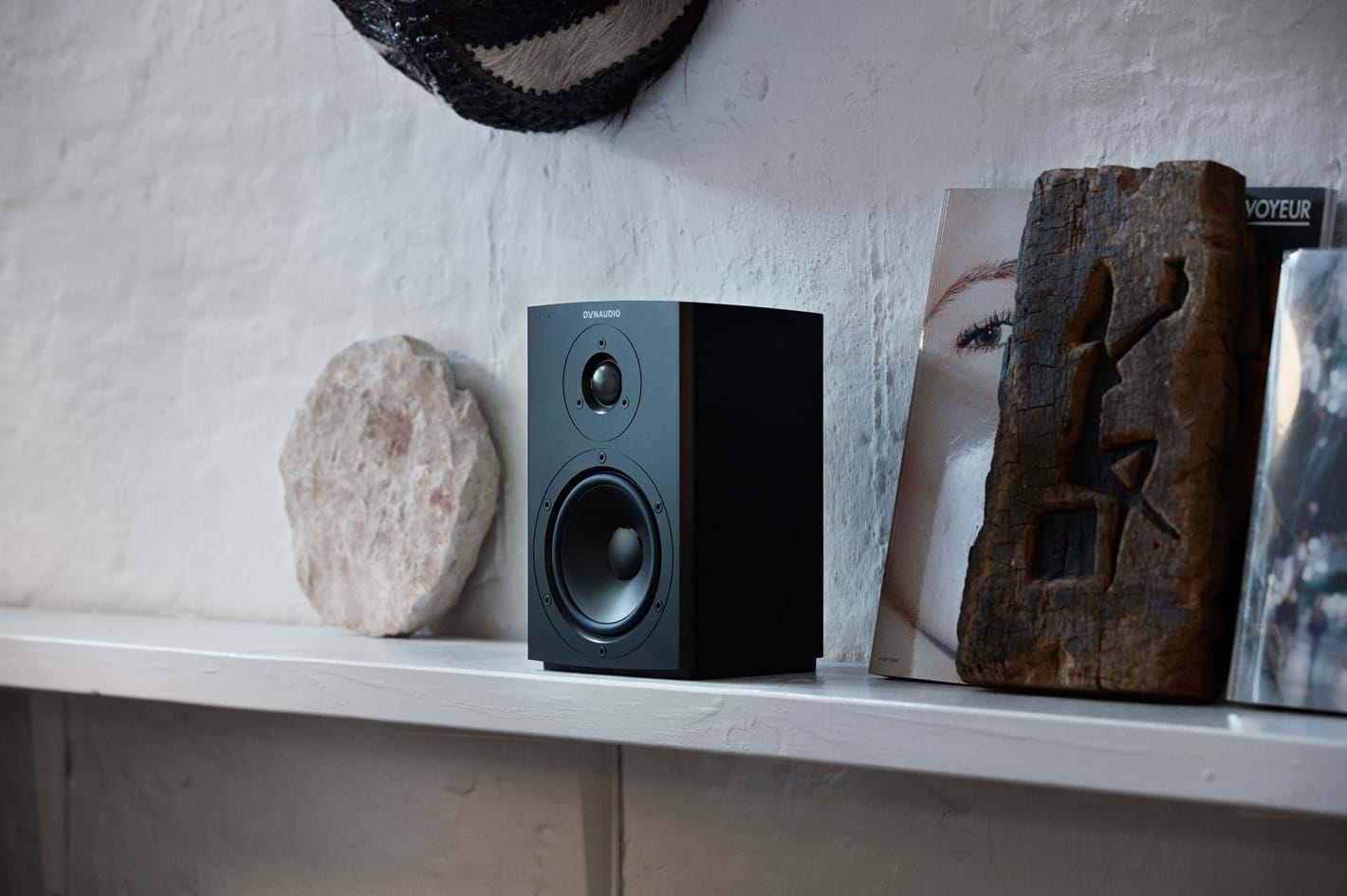
Stands: a construction for separation
And stands do more than combatting early reflections. They also provide what’s called decoupling between your speakers and the floor (which is also known as mechanical isolation). We will let Otto describe their construction:
“Take your typical Dynaudio Stand; you have feet with either spikes for solid floors or rubber for wooden ones at the bottom. Then you have a base plate that manages vibrations. Also, large base plates with feet far apart are more stable, making it harder for the speakers to fall over.
Click here to learn more about our range of all-aluminium stands for your Dynaudio speakers.
“In the support column, we prioritize space for sand and cable compartments. Finally, you have the top plate, which provides another layer of decoupling between the stand and speaker.”
And each part of the construction plays an important role in managing vibrations: the feet either couple or decouple the stand with the ground and the top plate does the same with the speakers.
Choosing the right feet for your stand. It matters
“The loudspeaker generates sound pressure which can make wooden floors vibrate. Platforms and stands keep those vibrations from getting back to the speaker – which is important for their performance.
“It’s a slightly different story with solid floors. Even a pair of Contour 20 bookshelf speakers can’t excite an entire concrete floor. That means, you can actually use the concrete floor to eliminate vibrations by coupling, fastening, your speakers as tightly to the floor as possible,” Otto explains.
And pay attention here. This is important: it really does make a difference if you use spikes or rubber rings between the floor and your stand – and carpets make for a completely different animal:
“It’s not an issue with carpets on solid floors. The spikes need to pierce the carpet and make contact with the floor and you’re all good. However, wooden floors are a trickier proposition. You shouldn’t use spikes as they’ll go through the carpet and make the wood vibrate.
“Preferably, you would take the carpet out. But, that’s not always an option for people – and might increase reflections. The solution is all about weight; the heavier you can make the stand, the better it will connect with the floor underneath and not just float around on the carpet.”
You don't want your stands playing along. Sand is the solution
Many stands come with a compartment dedicated to sand and similarly heavy and well-damped materials. And there’s method in the madness. You see, the speaker plays music by moving its drive unit in and out to create sound pressure: when the drive unit pushes outwards, it creates sound pressure, but when it moves inwards it pushes the entire speaker backwards.
It’s physics: for every action, there’s an equal and opposite reaction.
And as Otto explains, you don’t want that movement:
“All that unwanted movement can colour and distort the sound. We do our best to prevent vibrations by adding bracing to the cabinet, but that doesn’t really help with the movement.
“You can make a speaker move less in many different ways, and one of those is by adding more mass to the speaker and the stand; making it harder for the speaker to move. That’s why you’ll find a sand compartment in most stands.”
Thus, the sand provides dampening, but it also prevents the stand from ringing when it’s excited by the right frequencies – another handy little add-on. How much sand should you fill it with also matters:
“In principle, you should add as much weight as possible. However, you can add too much and change the centre of gravity – making it more prone to falling over. We usually recommend 2/3 full, which is the industry rule of thumb.”
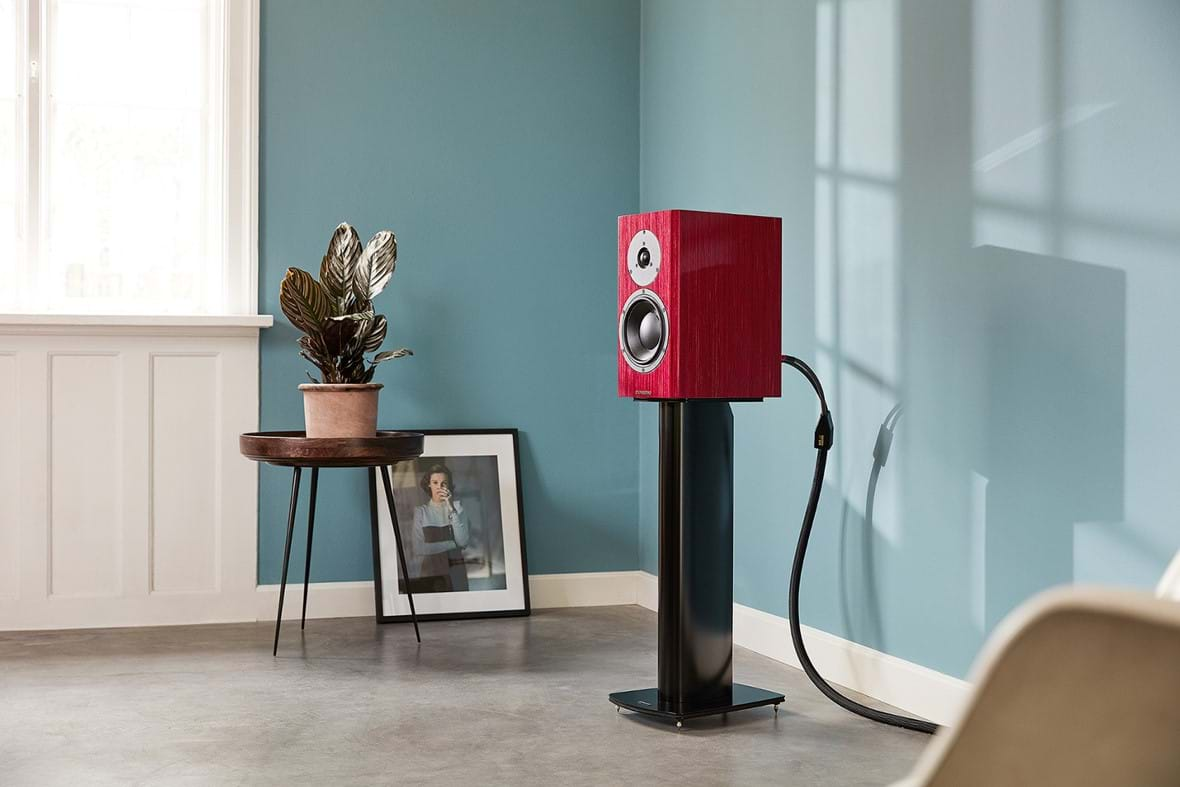
All about the treble
Finally, there’s also a height advantage to stands. You want the right level of treble and proper directionality from your speakers, and that means tweeters at ear level.
Want to learn more about our range of stands for your Dynaudio speakers? Click here.
“It’s important because tweeters don’t radiate sound pressure in all directions – as the bass units do because of their omnidirectional nature. No, the tweeter radiates in a much narrower window so to say,” Otto explains and continues:
“You could put your speakers on the floor with a little tilt aimed at your ears – definitely. In that setup you would get the right amount of treble, but what about directionality? You’d still have sound coming from the floor.”
Providing the optimal conditions
There you have it; the basics of why you should consider stands for your bookshelf speakers. As with much in hi-fi, this is only the introduction to a massive subject, but it serves as a good understanding of stands function and what they can do for your hi-fi system. And they can do a lot for providing your speakers with the optimal condition for top-notch performance
Sign up to get more great articles
Nothing compares to the satisfaction of knowing – for a fact – that something is as good as it gets


